College Students' Visit to Auschwitz
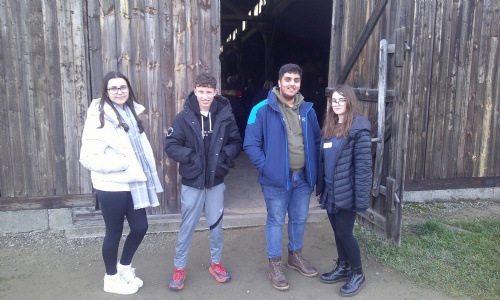
On Thursday 10th November, four Sixth Form College students and the Head of College, Rupen Chotai, had the privilege of visiting the Holocaust Memorial and Museum at Auschwitz in Poland.
This was part of a project that they undertook through the Lessons from Auschwitz Project run by the Holocaust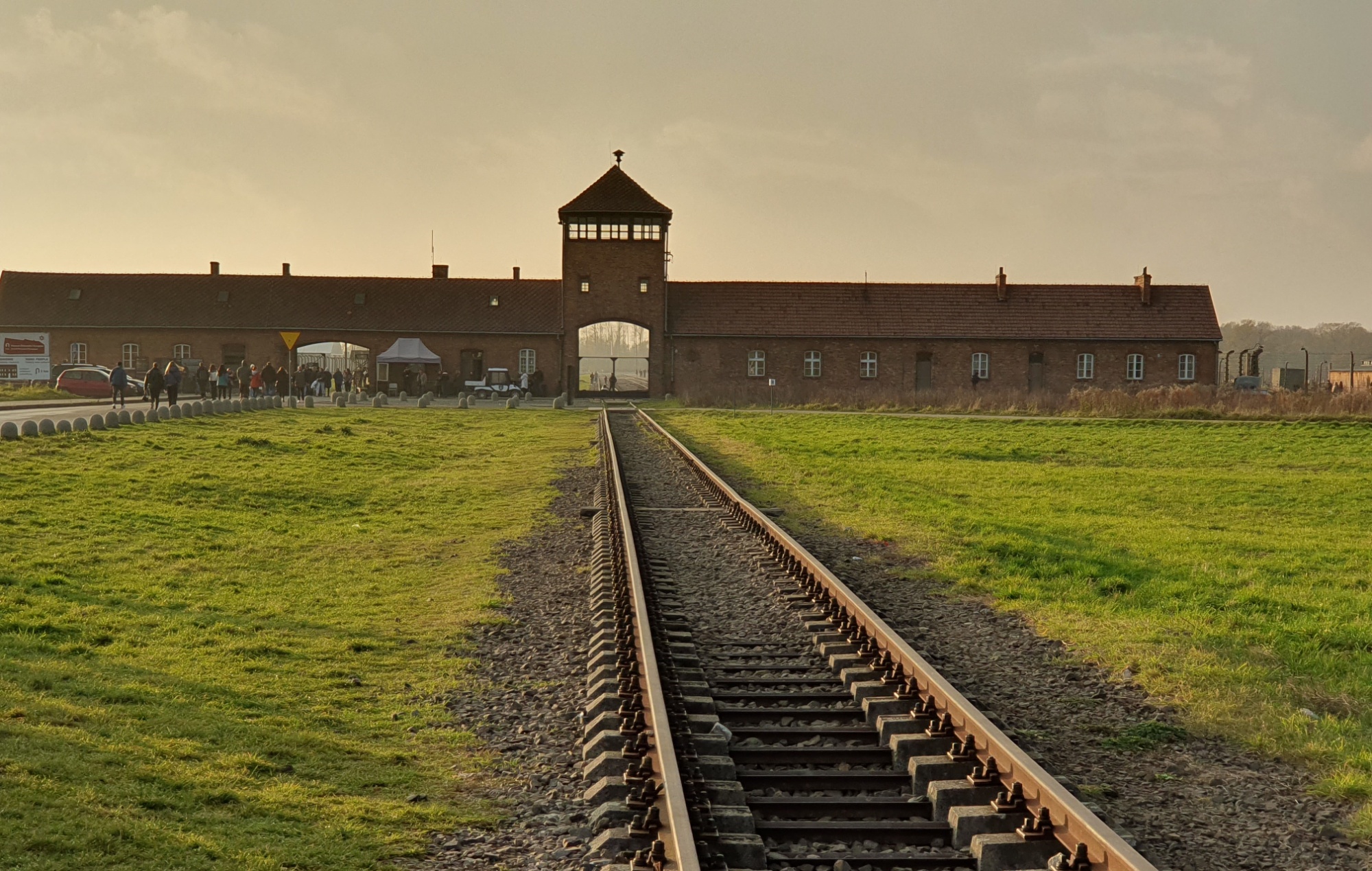 Educational Trust. To participate in the project, students were invited to submit statements of applications and the College was fortunate to receive several excellent statements. Normally, only two places are available to each school but, on this occasion, we were awarded with two additional places. Prior to the trip, the participants took part in a 2.5 hour seminar on the Sunday before, where they learnt about pre-war Jewish life and the circumstances leading to the Holocaust. On the day of the trip, the group met very early at Gatwick, along with 150 other students and teachers, ready for take-off at 6.30am. Rupen Chotai describes the experience below.
Educational Trust. To participate in the project, students were invited to submit statements of applications and the College was fortunate to receive several excellent statements. Normally, only two places are available to each school but, on this occasion, we were awarded with two additional places. Prior to the trip, the participants took part in a 2.5 hour seminar on the Sunday before, where they learnt about pre-war Jewish life and the circumstances leading to the Holocaust. On the day of the trip, the group met very early at Gatwick, along with 150 other students and teachers, ready for take-off at 6.30am. Rupen Chotai describes the experience below.
Nothing I write here can fully do justice to our visit. Shocking and unbelievable are words that somehow don’t fully convey the feelings we all had during the day in which we visited two camps; one a concentration camp and the other an extermination camp. We were fortunate to have an extremely knowledgeable tour guide and an educator from the Holocaust Educational Trust who were able to paint a vivid yet dark picture of the horrors that had taken place at these sites. These ranged from the well-known gassing of millions of innocent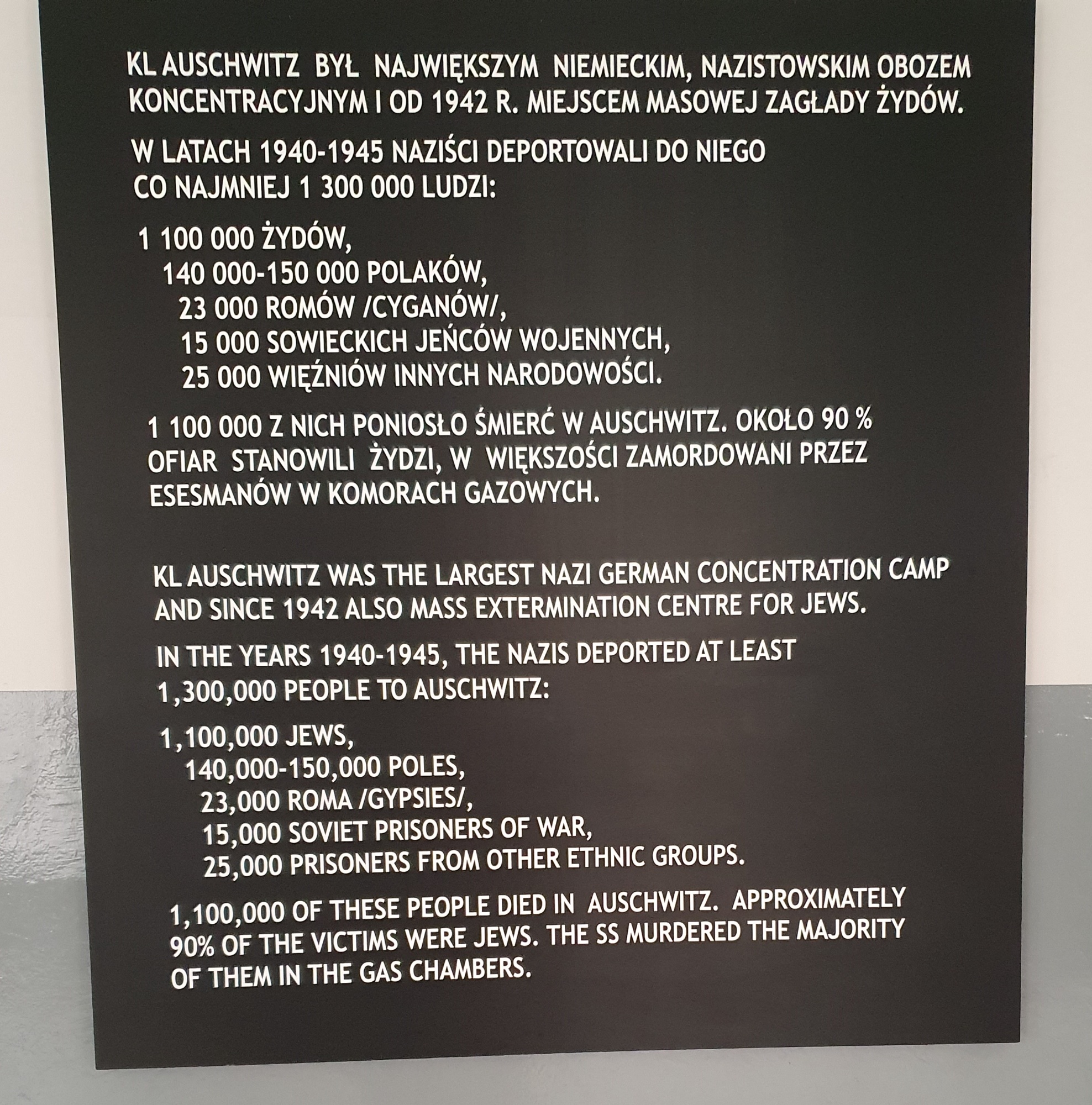 people, to the experimentation on children. It is very easy to become overwhelmed by the numbers involved and, therefore, a key part of the project is to humanise the stories. Throughout the day we were told very poignant, personal stories about many of the people who suffered and died. Many of the students and staff were in tears at various points during the trip.
people, to the experimentation on children. It is very easy to become overwhelmed by the numbers involved and, therefore, a key part of the project is to humanise the stories. Throughout the day we were told very poignant, personal stories about many of the people who suffered and died. Many of the students and staff were in tears at various points during the trip.
Our visit ended with an incredibly moving memorial service in between the remains of the two giant crematoria, where up to two thousand people at a time were murdered. Whether religious or not, it was impossible not to have your emotions stirred as we lit candles in the dark. Finally, the project was summed up best in the words of one of our students who, as we were leaving, said “Sir, everyone in our generation NEEDS to make this visit.”
Following the visit, which saw us return at 10.30pm, we attended a follow-up seminar. During this, we were honoured to hear a first-hand account of the atrocities from a Holocaust survivor. Although in his 90s, the eloquence and clarity with which he spoke will stay with me forever. A key purpose of the programme is for participants to become Holocaust ambassadors. Unsurprisingly, the number of survivors is growing smaller and smaller, and so it is vital that there are people who are able to advocate for them in years to come. Part of this is for the students involved to prepare a follow-up activity where they can present their thoughts to a wider audience, for example through assemblies, and I look forward to seeing their plans later in the year.
Below, you will read detailed descriptions of the day from the students who participated and the emotions they experienced.
Rupen Chotai
Head of College
Noah R, Year 12 Student
The place with no hope
I have been interested in history ever since Year 5 and how it’s shaped our world. My first ever interaction with anti-semitism was unexpected. I have been a season ticket holder of Tottenham Hotspur for as long as I can remember. Unbeknown to me at the time, the club has had a historical association with the Jewish community due to its location in London. It was 2014 and I was seven years old when Tottenham played a London derby against its rivals Chelsea. During the game, to my surprise, a strange noise ‘tis’ noise came from the Chelsea supporters. Curious, I asked my dad what it was. He said they were mimicking the sound of the gas chambers from the Holocaust. It may have been small and insignificant at the time but that was my first ever exposure to the greatest human tragedy mankind has ever experienced. A regime of terror built on hate that infiltrated the lives of many people. It is for this reason that I was compelled to apply to be part of the Lessons from Auschwitz Project.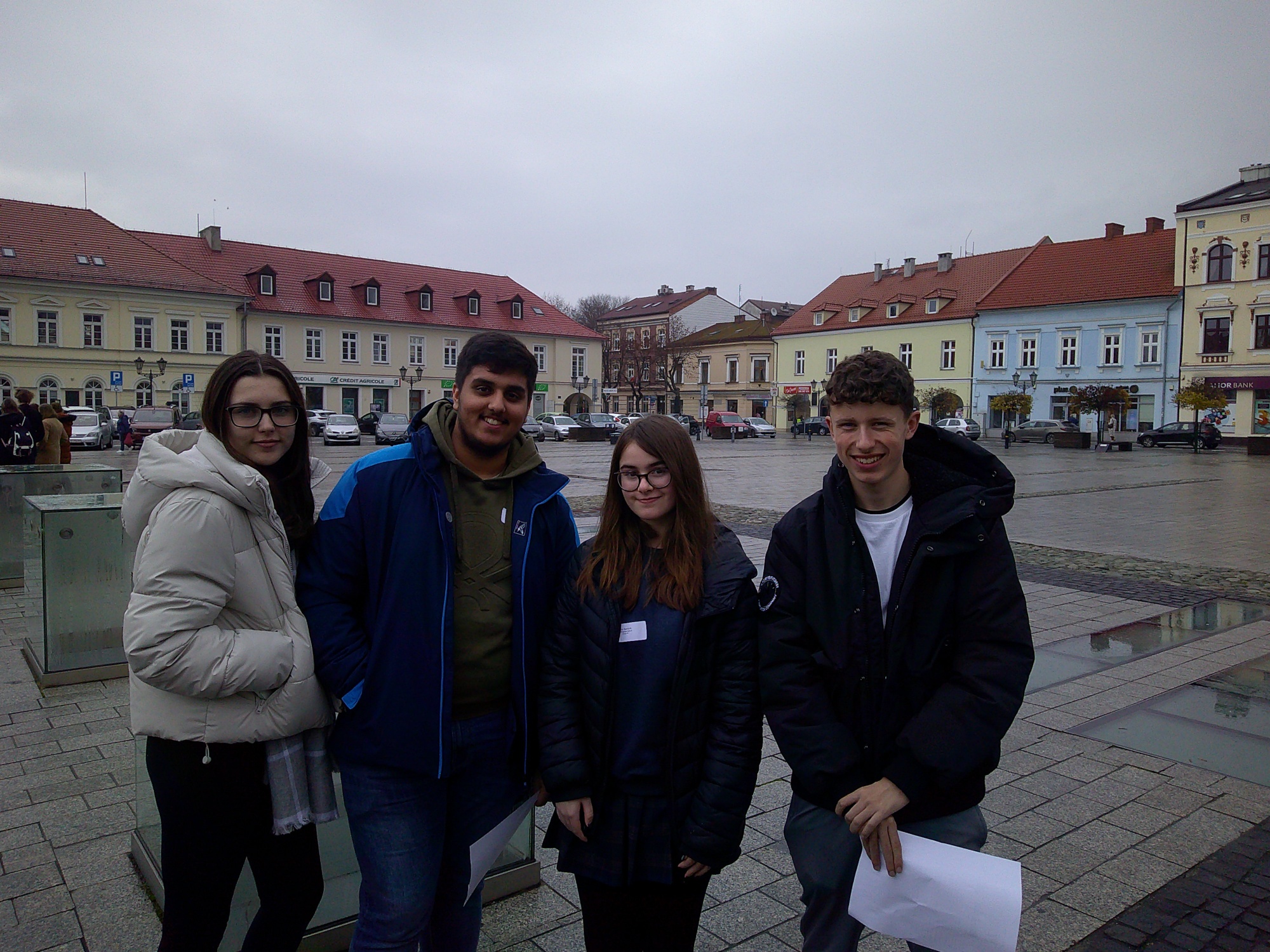
After an incredibly early start, we landed in Krakov, Poland early in the morning to a beautiful mild day. We boarded our coaches and set off to the relatively small yet picturesque town of Oświęcim, the polish name for the village of Auschwitz. It was surreal, in hindsight, to look back on this village which looked like it had been ripped out of a Disney film. Seeing people just getting along with their lives and smiling, it was weird and just felt separate to the experience. But at the time my spirits were high, and I was intrigued as to what lied ahead.
My first sight upon reaching the first camp of Auschwitz 1: looking over the road and seeing a burger place parallel to the concentration camp - a theme I will refer to later. As we entered the camp, the words on the gate read ‘Arbeit macht frei’, which ironically means ‘work sets you free’. We then entered rooms displaying evidence of war crimes. You look to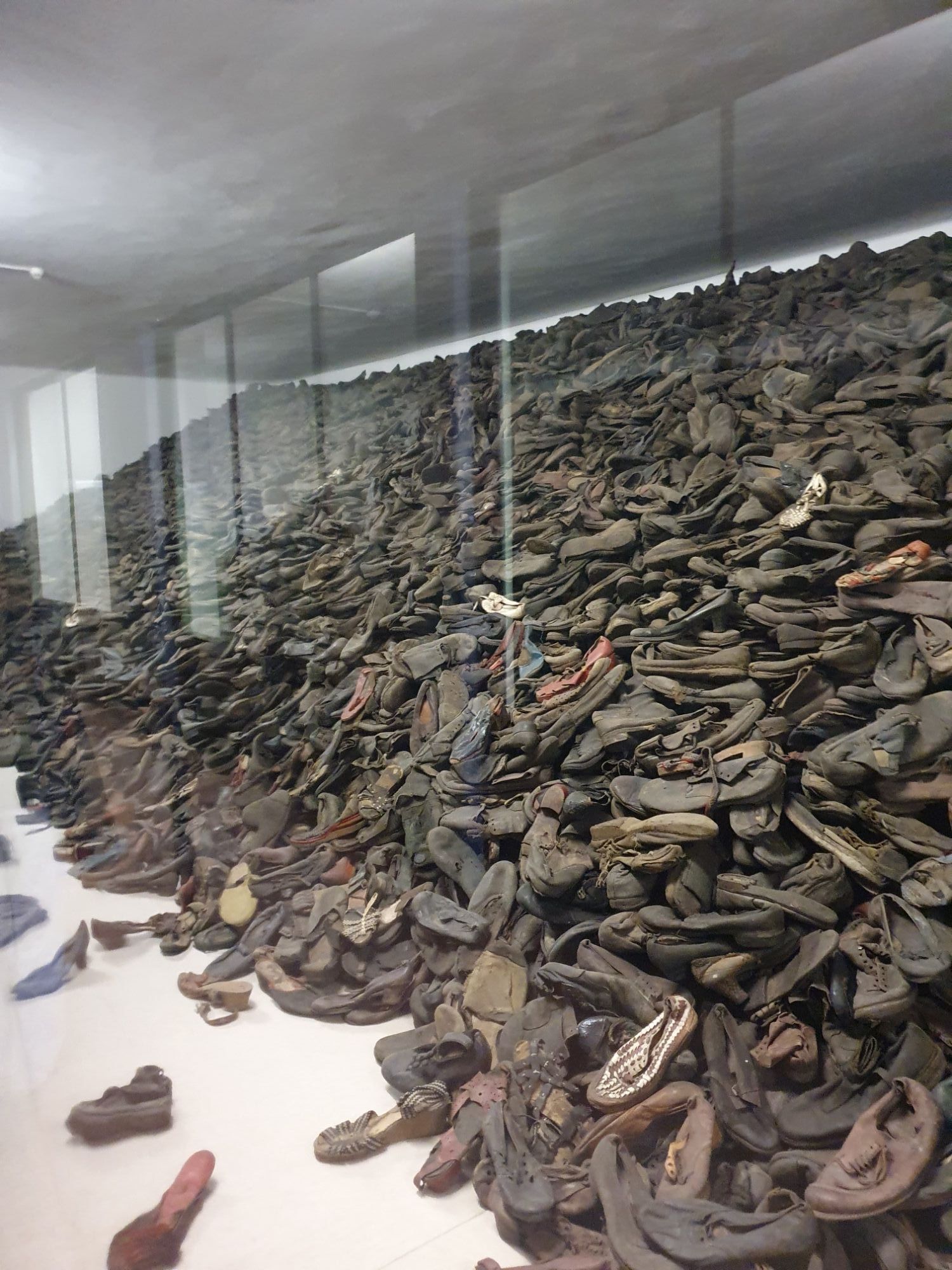 your left and right surrounded by cannisters of Zyklon B, the cyanide used in the gas chambers, and in the next room hair, just hair, women's hair cut off by the Nazi Party. The next room was full of children’s shoes belonging to innocent children whose only crime was who they loved or what they did or did not believe.
your left and right surrounded by cannisters of Zyklon B, the cyanide used in the gas chambers, and in the next room hair, just hair, women's hair cut off by the Nazi Party. The next room was full of children’s shoes belonging to innocent children whose only crime was who they loved or what they did or did not believe.
We then entered rooms displaying evidence of war crimes. You look to your left and right surrounded by cannisters of Zyklon B, the cyanide used in the gas chambers, and in the next room hair, just hair, women's hair cut off by the Nazi Party. The next room was full of children’s shoes belonging to innocent children whose only crime was who they loved or what they did or did not believe.
Walking into the gas chamber of evil had to be one of the most harrowing experiences of the trip. Throughout the whole trip, I had tried not to get emotional - I am not a very emotional person at all - but even I could not look past the cruel evil walls of the building. And the crematorium, a human bakery, where was the humanity? Where was the hope? Where was the basic human kindness that we experience every day even if it is just saying hello on your morning walk?
We then subsequently left the first camp of Auschwitz 1. Deeply saddened, we walked past a McDonalds and cafés which were a complete juxtaposition of where my head was at. We got back on the coach for the journey to our next destination of Auschwitz-Birkenau. During the journey, I was trying to figure out why I couldn't understand the feelings of how I felt because I didn't feel sad, I didn't feel angry, I didn't feel obsolete. But on that coach, it hit me. I have lived my life hoping that however bad my day was, things can only get better. But, at Auschwitz, there simply is no hope. None whatsoever. What made it hard for me was to relate emotions, so you just end up feeling numb.
When we left the camps, we discussed as a group what's it like stepping back into the real world back to humanity. My answer: It's hard, hard to become yourself again as I felt numb and dumb struck. You hear about the horrors but only when you see the barracks and how cold it is to sleep, when you see the names of millions who died and yet so many blank pages of the ones who are forgotten in human history, it’s impossible to come back down to earth. This wasn’t earth at all. I also struggled to reconcile the horrors we witnessed juxtaposed to the other visitors who were there, including a four-year-old girl in her bright pink coat holding onto her mother's hand, oblivious to the atrocities. I couldn’t help thinking that had she been there barely a century ago during the holocaust she would almost certainly have been selected for death rather than innocently walking around.
We then arrived at the infamous, larger camp of Aushwitz-Birkenau where we were greeted by the image of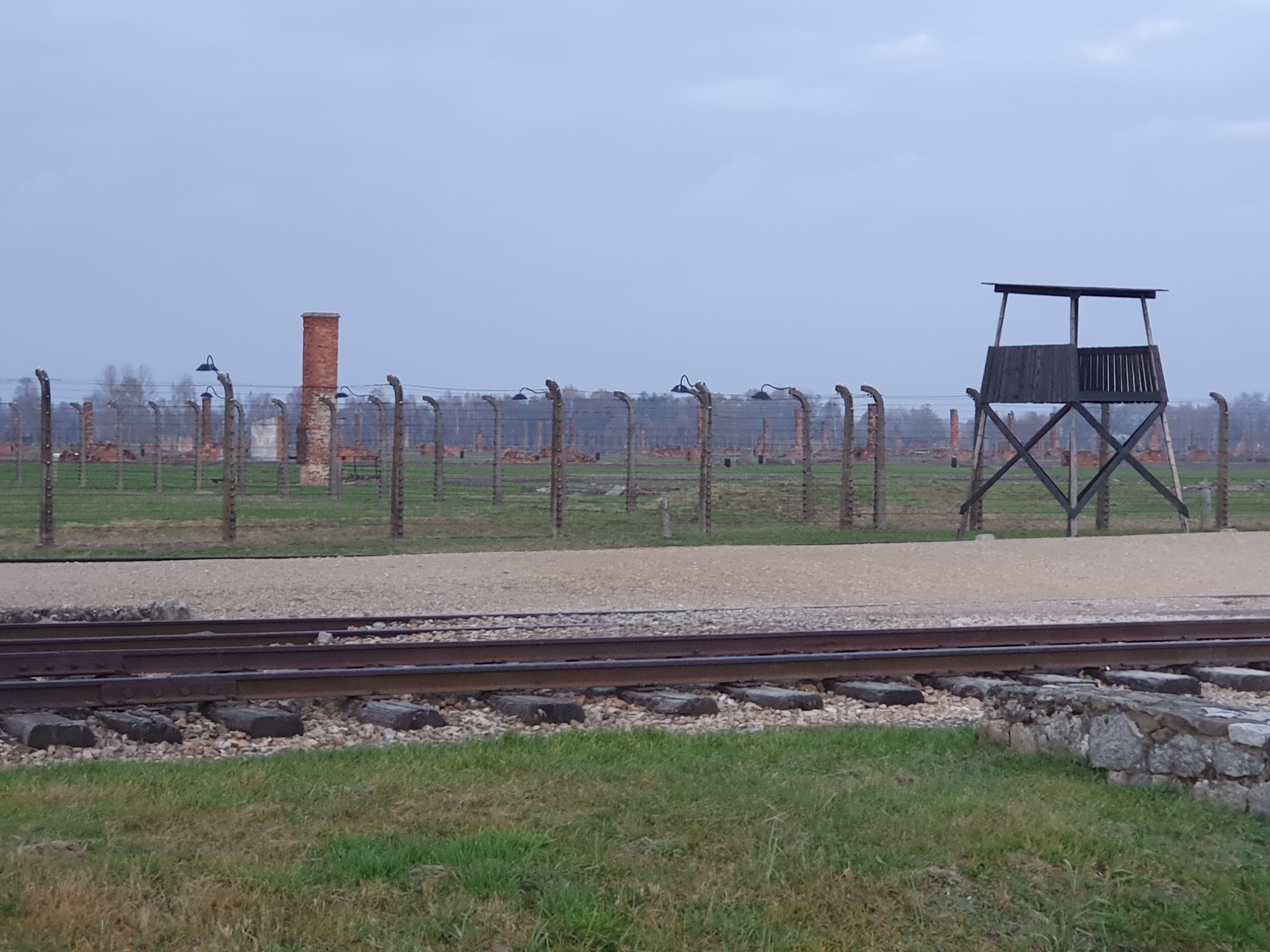 the train track leading through the gates surrounded by barbed wire – a vision that reminded me of a scene from The Great Escape. After a few photos, we walked through to the last remaining wooden barracks. Our first sight was of the beds. No mattress or pillows just single beds where four strangers who may not even share the belief of Judaism would sleep together. The holes in the ceiling meant they only had each other to keep themselves warm in the harsh Polish winter. The toilets added to the shock. Roman toilets you would see in Ephesus but only this time no sponge or any toilet paper at all. They were only afforded one wash every few months and it was just grim thinking that something we take for granted every day like a good wash they couldn't experience. The little things make a big difference.
the train track leading through the gates surrounded by barbed wire – a vision that reminded me of a scene from The Great Escape. After a few photos, we walked through to the last remaining wooden barracks. Our first sight was of the beds. No mattress or pillows just single beds where four strangers who may not even share the belief of Judaism would sleep together. The holes in the ceiling meant they only had each other to keep themselves warm in the harsh Polish winter. The toilets added to the shock. Roman toilets you would see in Ephesus but only this time no sponge or any toilet paper at all. They were only afforded one wash every few months and it was just grim thinking that something we take for granted every day like a good wash they couldn't experience. The little things make a big difference.
Stuttering with no enthusiasm, we wandered onto the infamous platform. To the left you died, that's it. To the right, you died a staggered death where you worked then probably died, maybe you stood a chance, but I would not put any money on it. They informed us of a case of a mother with a baby girl and a 13-year-old boy. The mum and the baby were sent to the left, to their death. But the boy was separated and sent to work. Now you must remember they did not know their fate had just been decided and they had just been sentenced to death as they weren't told what their fate was to be. So, the mother kicked and screamed for her boy back. The officers decided to oblige. She didn't know that she had just sentenced her boy to death with her and the baby. But I think she made the right call.
Now I could tell you many more horrid, unthinkable inhumane stories in this field of barracks, a blown-up gas chamber, barbed wire and a cattle car but I want to bring you to the end of my day. I was exhausted. I was numb. I had no enthusiasm and my joviality and sense of humour had been sucked out of me. But, at the end of the platform by the gas chamber, there is a memorial where I sat down and met a total stranger. We tried to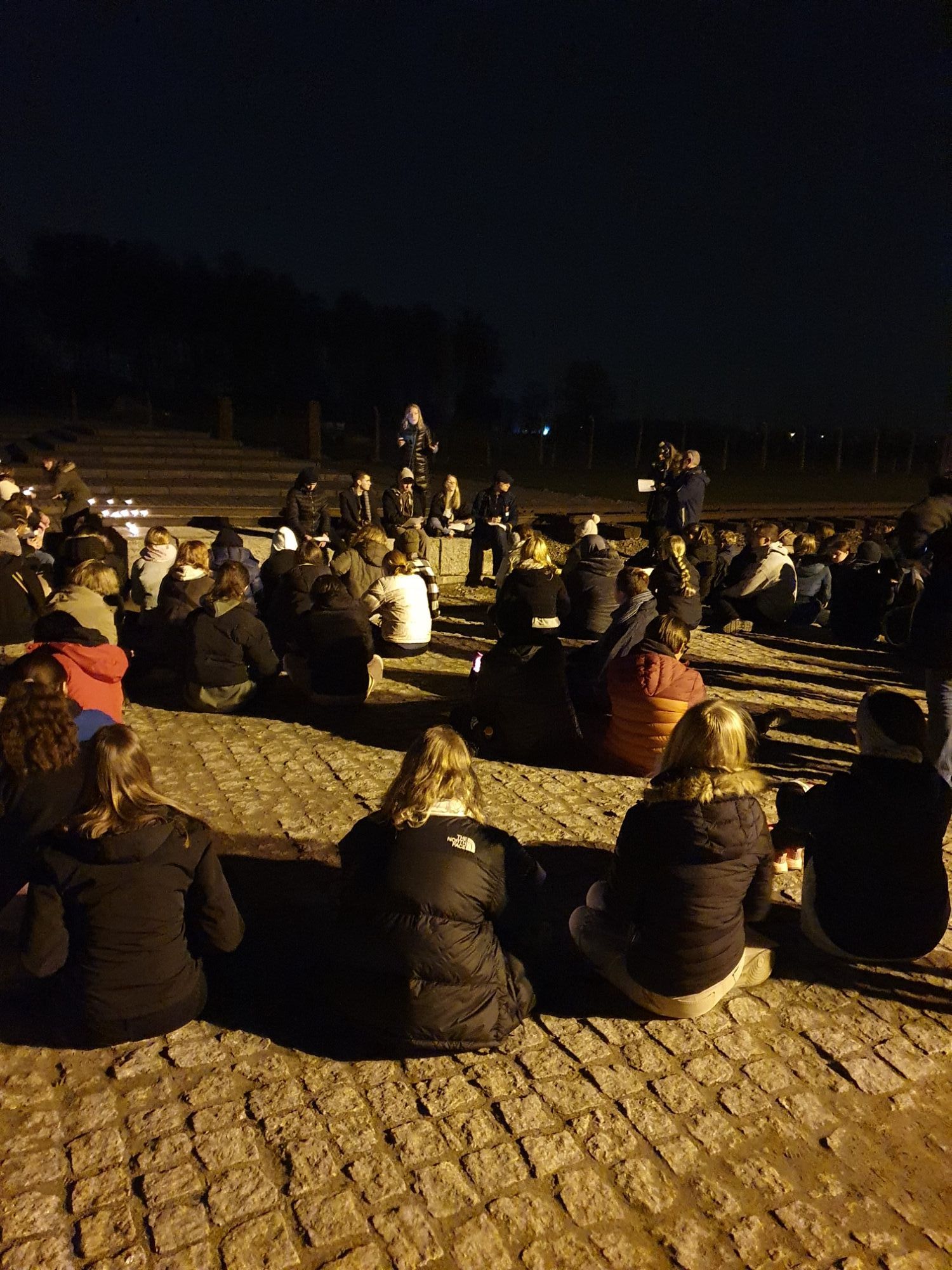 light each other’s candles. I made her laugh, and it was the weirdest feeling I felt all day. I hadn't felt humanity while at this place of death. I titled my article ‘The place with no hope’ but, at that moment, I realised maybe there was, maybe there was a hope they would get out and that one day they could return home. Human spirit remains wherever no nationalism or prejudice can destroy this.
light each other’s candles. I made her laugh, and it was the weirdest feeling I felt all day. I hadn't felt humanity while at this place of death. I titled my article ‘The place with no hope’ but, at that moment, I realised maybe there was, maybe there was a hope they would get out and that one day they could return home. Human spirit remains wherever no nationalism or prejudice can destroy this.
I am writing this on Remembrance Day and would share my thoughts and feelings with anyone and everyone who lost someone in war. I have always been interested in joining the armed services and will consider this to stop tragedies like this. But the poppy symbolises that brave sacrifice. There is nothing to symbolise the pain and despair they suffered only our minds and stories. It's up to you, but I urge you to go once. My last words, as I walked out of that train terminal and touched the brick building, “I am never coming back again” - just with stronger language!
There is nothing to symbolise the pain and despair they suffered only our minds and stories. It's up to you, but I urge you to go once. My last words, as I walked out of that train terminal and touched the brick building, “I am never coming back again!
Thank you to the Holocaust Educational Trust for this opportunity and to Mr Chotai for accompanying us on the trip.
Rajveer U, Year 12 Student
We started our day at London Gatwick, very early in the morning, for a short flight to Krakow airport, Poland where, only an hour’s drive away from the airport, such horrific events would take place during the Second World War. We arrived in Krakow around 9am and went on a coach with other people from different colleges in the South East of England with our educator from The Lessons from Auschwitz Project. After driving through the countryside of Poland, we eventually reached Oświęcim, which was the town where the camps of Auschwitz-Birkenau were located. During the German occupation of Poland in World War II, the Nazi party changed the town’s name to the German language which is Auschwitz. The second I saw the sign of the town, I instantly got a feeling of overwhelming unease and dread as I knew such a terrible event happened there, yet the area was so peaceful and the town was pretty.
We got off the coach and walked to the town square, where we talked about Jewish life before the war and how the town square was a marketplace. We also learnt a disturbing fact how before the war 53% of the 17,000 people living in the town were Jewish and, after the war, only 200 of the Jews would return to the village and now, since 2018, there are no more Jews living in the town.
After a brief visit of the town, we got back on the coach and made our way to the first camp site called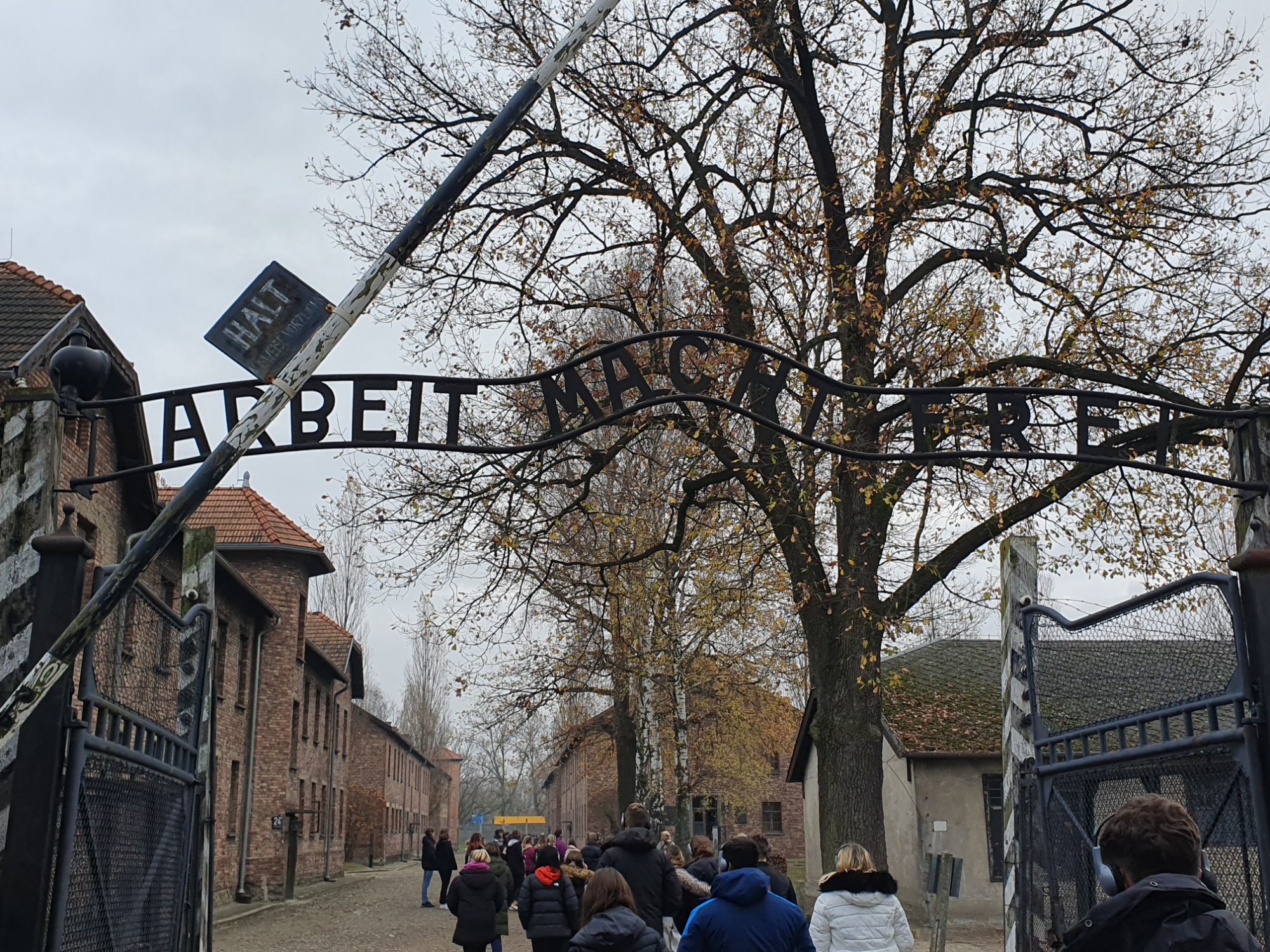 Auschwitz 1. It was the first of the three camps made in Auschwitz and was the smallest. This camp was a concentration camp but still saw the death of thousands of prisoners. The camp was made up of 22 brick barracks that were two stories high. Upon arrival, I was shocked to see a restaurant and a hotel opposite of the camp and housing around the area as if people are trying to normalise the area. After we met our tour guide, we walked through the gates where thousands of prisoners would walk through not knowing that it was the last time that they would see the outside world. On the gate there was writing that said “Arbeit macht frei” which translates to “work sets you free”.
Auschwitz 1. It was the first of the three camps made in Auschwitz and was the smallest. This camp was a concentration camp but still saw the death of thousands of prisoners. The camp was made up of 22 brick barracks that were two stories high. Upon arrival, I was shocked to see a restaurant and a hotel opposite of the camp and housing around the area as if people are trying to normalise the area. After we met our tour guide, we walked through the gates where thousands of prisoners would walk through not knowing that it was the last time that they would see the outside world. On the gate there was writing that said “Arbeit macht frei” which translates to “work sets you free”.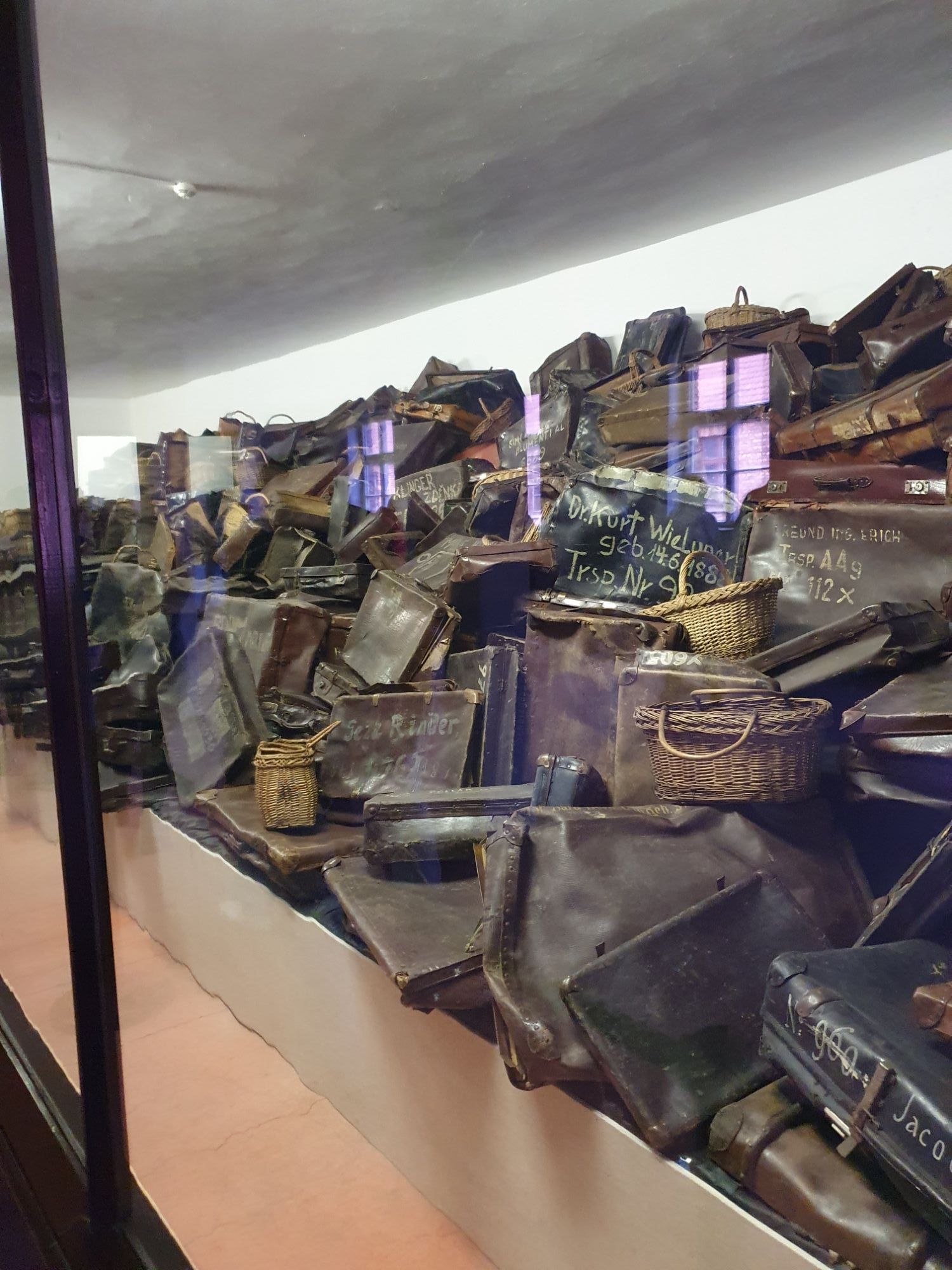
The second I walked through the camp, the realisation hit me as this was the place that I have seen before in pictures but now it was real. We made our way to the first block and as we walked in, the first thing we saw was an urn of ash and small bits of bone from the victims of the camp. So many people were in the urn and it was just a small portion of the victims. After we walked around the first block and saw many horrifying things, we got to the room that I was dreading the most - the room of hair. The liberators of the camp found two tonnes of hair from 40,000 people and, in this room, it was only a small portion of the hair found. We also saw a blanket that was being weaved from female human hair to then be used for prisoners to have. This room was what got me, it was the most terrifying and just sad room I’ve ever visited and it really helped me put the amount of deaths into perspective.
After we walked around the first block and saw many horrifying things, we got to the room that I was dreading the most - the room of hair. The liberators of the camp found two tonnes of hair from 40,000 people and, in this room, it was only a small portion of the hair found. We also saw a blanket that was being weaved from female human hair to then be used for prisoners to have. This room was what got me, it was the most terrifying and just sad room I’ve ever visited and it really helped me put the amount of deaths into perspective.
The next major room was the room of shoes and it was just piles of never ending shoes on both sides of the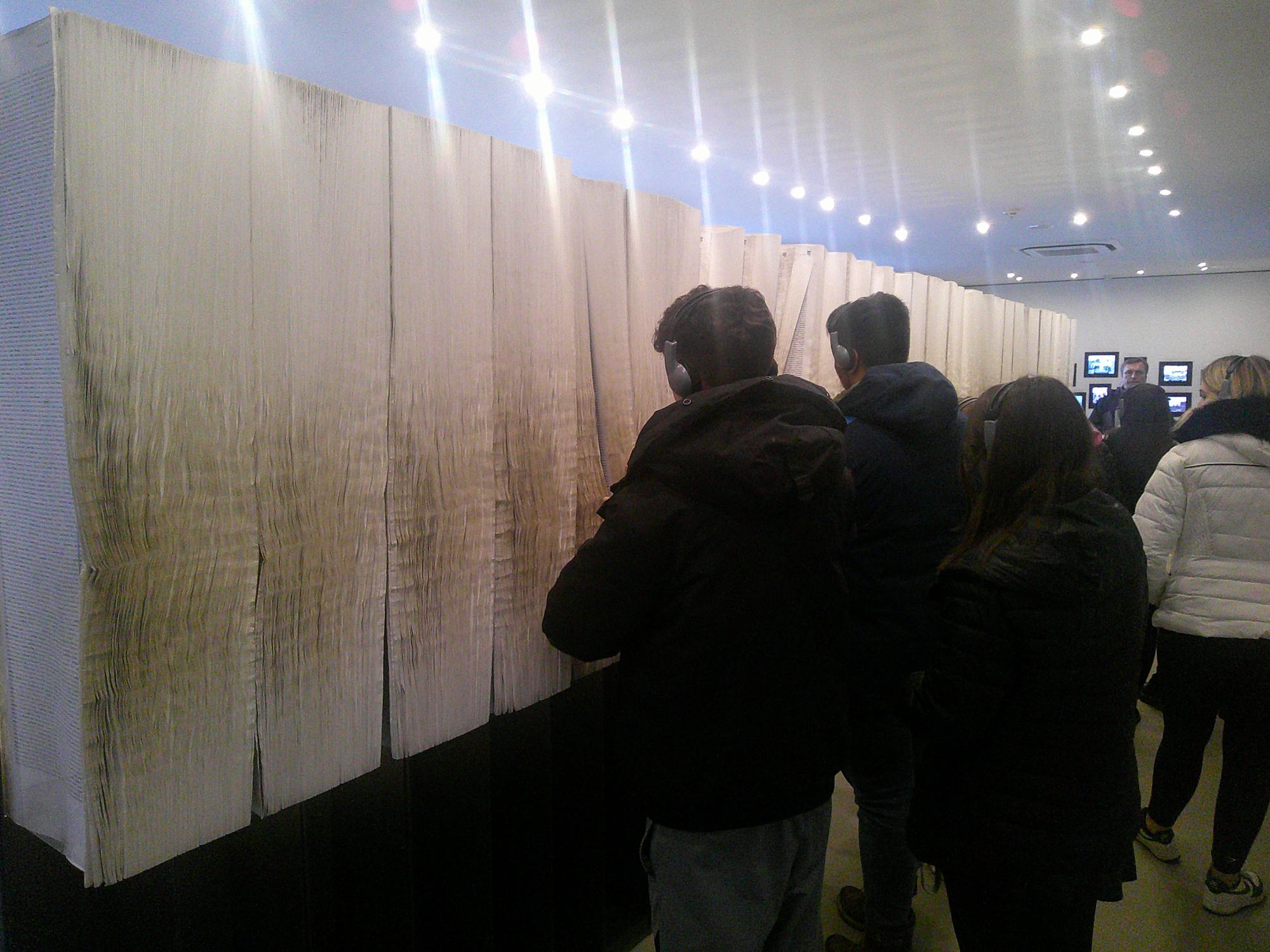
Our final destination at Auschwitz 1 was to see a replica of a gas chamber, which was restored to its original state after the Nazis tried to blow the gas chambers up to hide the evidence of mass murder. It took some courage for me to enter but I did, and I could feel my chest being pushed down and just the overwhelming feeling of sadness…I tried to make sense of it but it’s just impossible.
Our final destination at Auschwitz 1 was to see a replica of a gas chamber, which was restored to its original state after the Nazis tried to blow the gas chambers up to hide the evidence of mass murder. It took some courage for me to enter but I did, and I could feel my chest being pushed down and just the overwhelming feeling of sadness. Looking at the walls, you can see the scratch marks made by the fingernails of the victims that were being gased in the chamber as a last attempt to try and get out of there to save their life. Right next to the gas chamber was a crematorium and it was just horrible to see how the Nazis had made an efficient killing factory as they could kill at least 2,000 prisoners a day. We finished our tour of the first camp and, on the way back to the coach, we were all just silent and shocked after what we saw. I tried to make sense of it but it’s just impossible.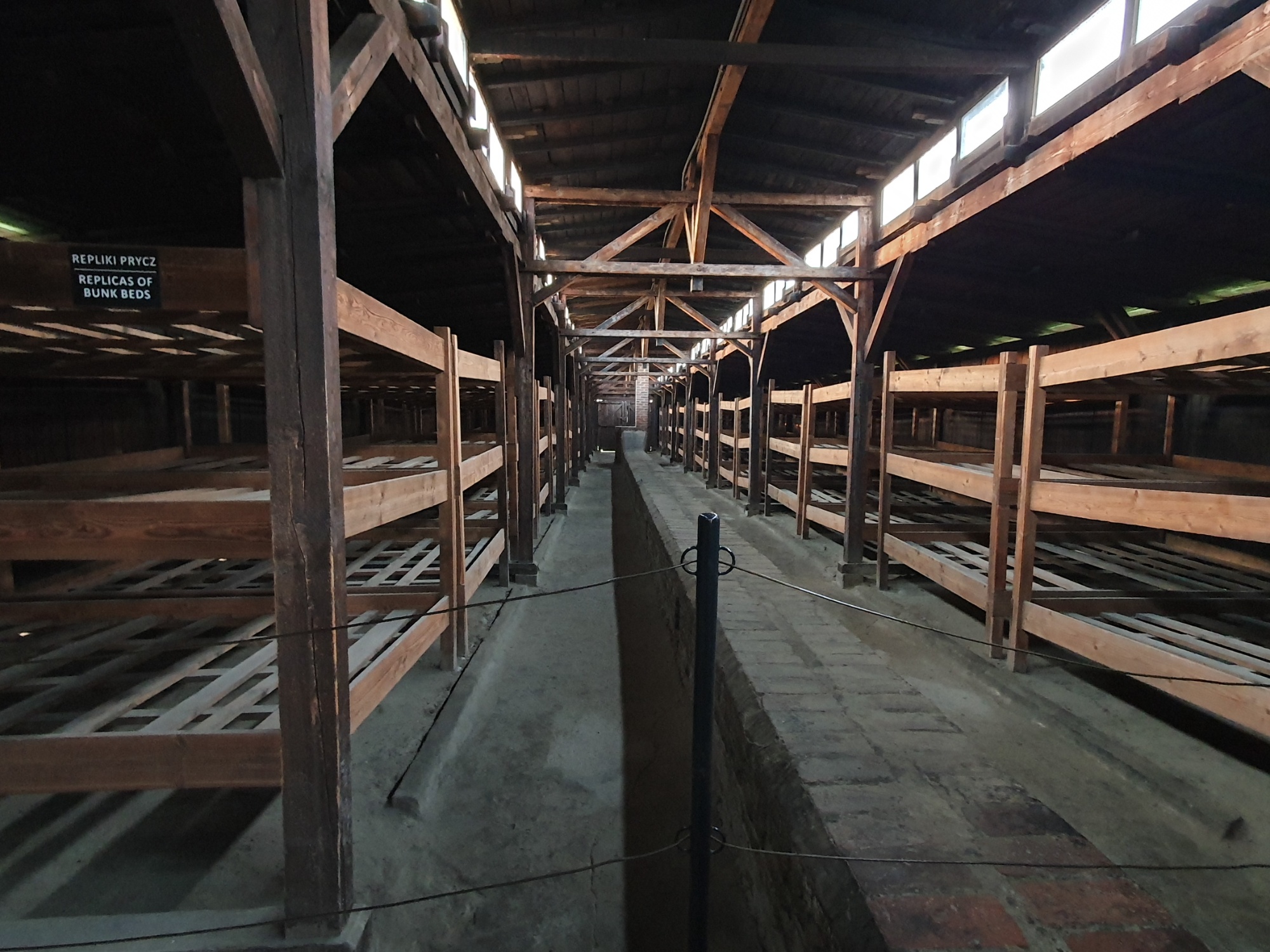
After a quick break, we made our way to the second camp, Auschwitz-Birkenau, the biggest of the three camps and the extermination camp where more the 1.1 million prisoners would be killed. The first thing we saw was the infamous guard house and the train track going through the gates. Walking into the camp, I was shocked to see that only a few of the buildings stand and the rest are just ruins. It was a massive field that was just covered with barbed wire and guard towers everywhere. We went to the first barrack - originally a stable for horses - turned to housing to accommodate 700 prisoners in a tight, cramped room with bunk beds that had to fit five people on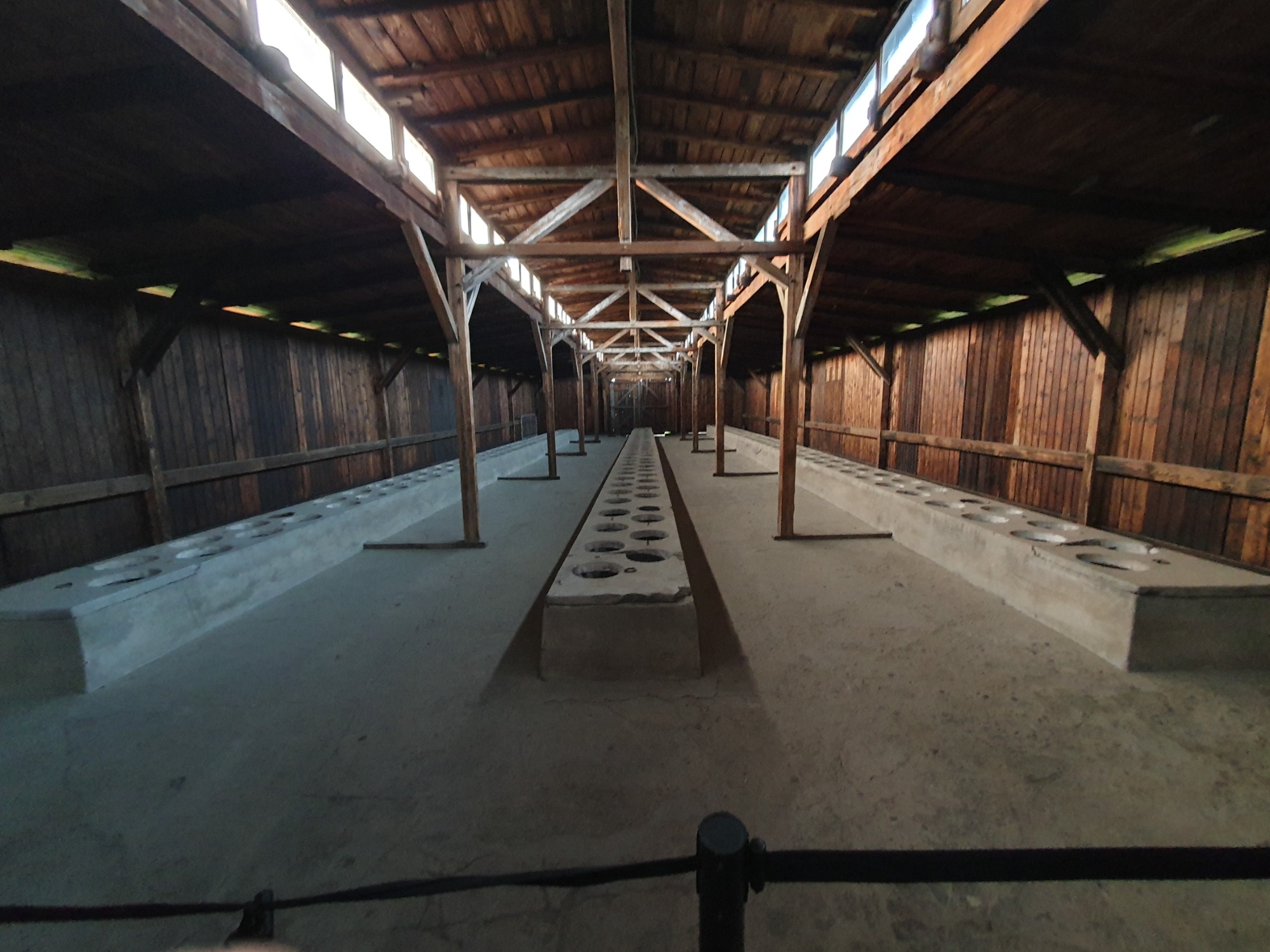 each layer so there would be 15 prisoners on each bunk bed. Seeing the condition of the area just shows how the Nazis did anything to dehumanize the Jews and it even went to the point that they were staying in horse stables. There were barracks that were built for latrines which were hundreds of toilets that were just a hole in the ground right next to each other so that even privacy was taken away. We learnt a story how one of the prisoner’s friends would try his best to keep clean and to have a shower as much as they could to try and keep any human dignity the prisoners had left in the camps.
each layer so there would be 15 prisoners on each bunk bed. Seeing the condition of the area just shows how the Nazis did anything to dehumanize the Jews and it even went to the point that they were staying in horse stables. There were barracks that were built for latrines which were hundreds of toilets that were just a hole in the ground right next to each other so that even privacy was taken away. We learnt a story how one of the prisoner’s friends would try his best to keep clean and to have a shower as much as they could to try and keep any human dignity the prisoners had left in the camps.
After we saw the two barracks, we went down to the platform where thousands of Jews would be sentenced to death after they came out of the train. The first selection would be the thing that decided whether you were going to live and have a chance to survive or selected to go straight to the gas chamber without knowing that your life was about to end. As we walked down to the end of the camp, we saw a group of Orthodox Jews praying at one of the destroyed gas chambers and it really touched me that, nearly 80 years since the liberation of Auschwitz and the end of the Holocaust, the Jewish community still remembers and haven’t forgotten the people that had lost their lives.
The last building that we visited was the building where people would enter as normal people and come out as prisoners. We walked into a massive room where they would get undressed naked in front on each other. They were then walked around the building to the barbers where their hair was shaved off and they were disinfected with a shower. Then there was a place where the second selection would happen which was when doctors would examine the prisoners and see who would be good for the experiments, they were most interested in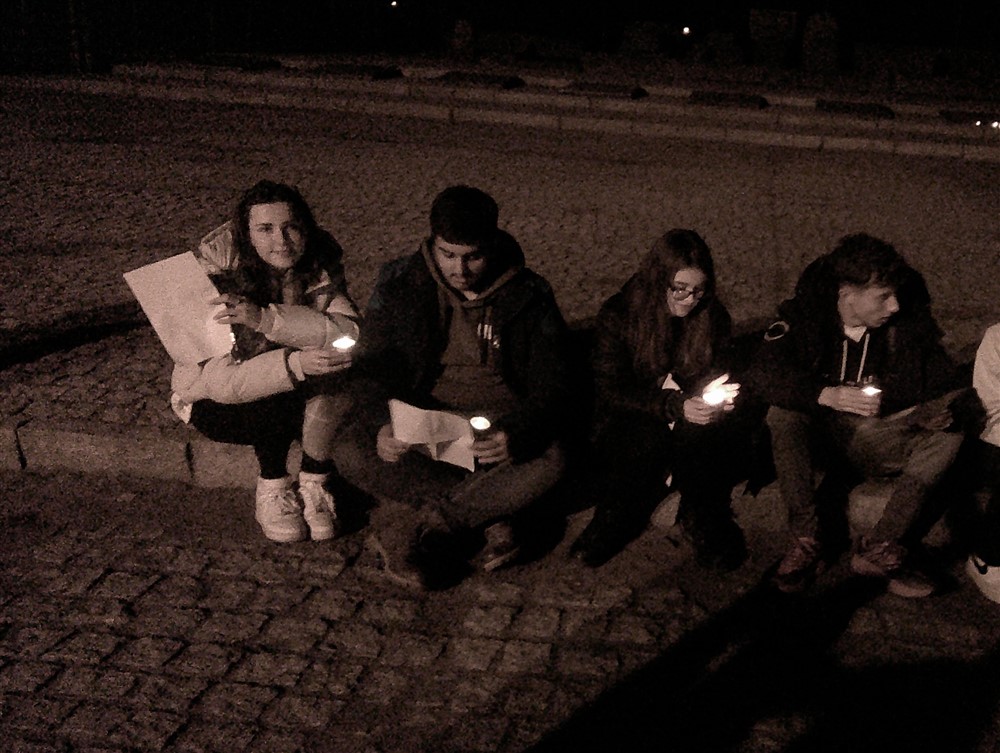 twins where Josef Mengele would do experiments on them, known as the Mengele Twins. Then we came to the room where they would be given their prison uniform and would walk out the door as prisoners of the camp.
twins where Josef Mengele would do experiments on them, known as the Mengele Twins. Then we came to the room where they would be given their prison uniform and would walk out the door as prisoners of the camp.
To conclude the day, we all met up at the memorial where we all did a ceremony and a prayer for the prisoners who tragically lost their lives at the camp and other camps during the Holocaust. On the way home, tired and emotionally drained, all I could think about how it’s unfair that I was able to leave the camp and go back home but 6.3 million people from all camps could not do the same as me.
Alanna B, Year 13 Student
As someone who takes three A-level subjects based on understanding human behaviour, the subject of Auschwitz has always fascinated me. The opportunity to go on a day trip to Poland and learn about the history behind Auschwitz was shown to us in an assembly, after which I applied and was successful.
It was an early morning on 10th November when we set off to Poland. We arrived safely at the airport and then got a coach for an hour to the town of Oświęcim. We were only there for a short amount of time where we briefly learnt about the past life of Jews who populated this small town.
We headed to the first camp, Auschwitz 1. I hadn’t prepared myself for what I was about to see and, upon reflection, I don’t know how you can.
We then got back onto the coach and headed to the first camp, Auschwitz 1. I hadn’t prepared myself for what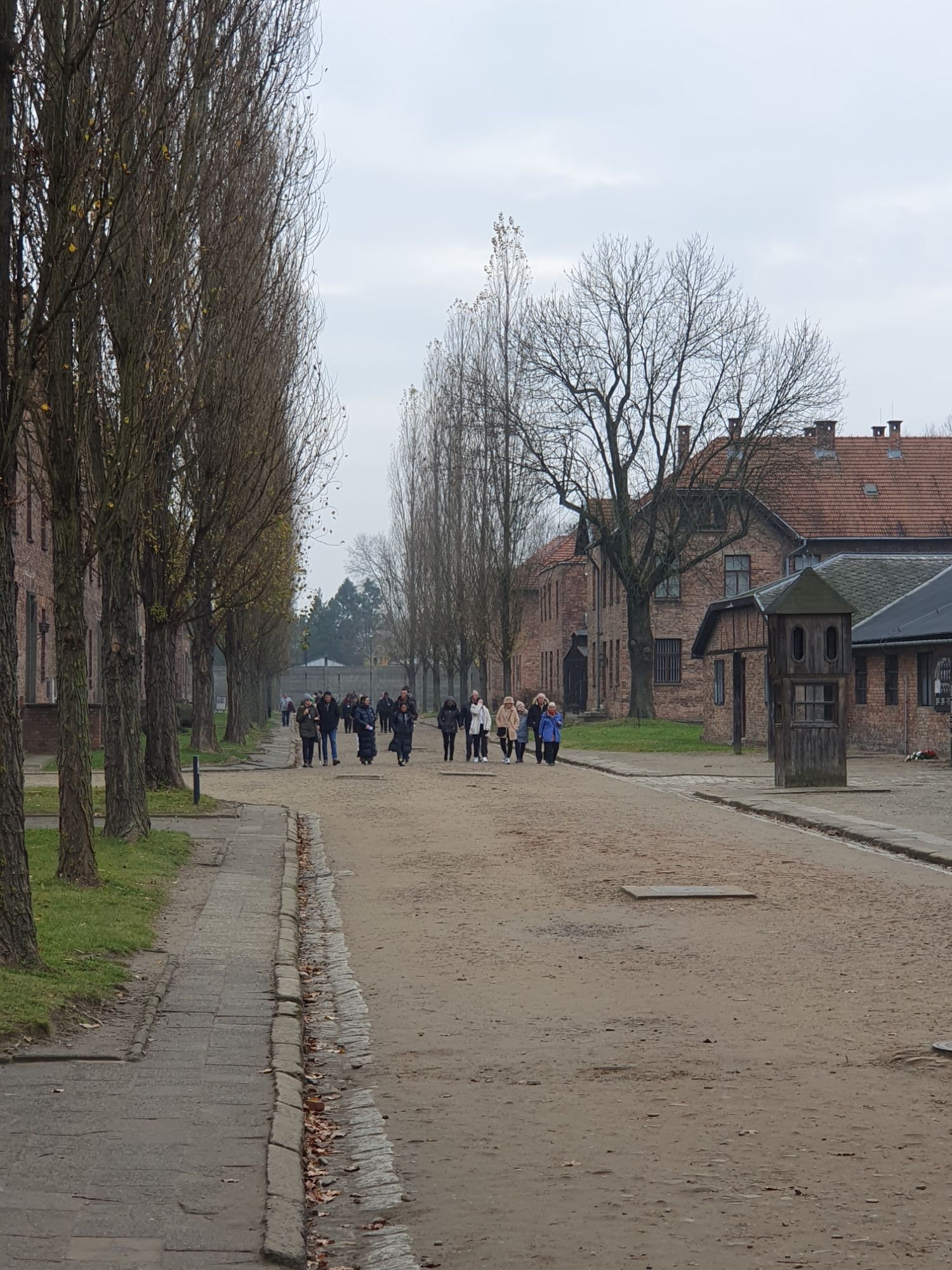 I was about to see and, upon reflection, I don’t know how you can. We entered and immediately saw the infamous gate with the words “Arbeit macht frei” translated to “work sets you free”. As we entered the gate, we saw rows of two-story brick buildings. Our tour guide took us into some of these buildings containing many of the prisoners’ belongings. This ranged from hair, clothes, shoes, bags, glasses and so much more. This part of the camp was so unreal and hard to comprehend that the artefacts that I was staring at belonged to people like me and you.
I was about to see and, upon reflection, I don’t know how you can. We entered and immediately saw the infamous gate with the words “Arbeit macht frei” translated to “work sets you free”. As we entered the gate, we saw rows of two-story brick buildings. Our tour guide took us into some of these buildings containing many of the prisoners’ belongings. This ranged from hair, clothes, shoes, bags, glasses and so much more. This part of the camp was so unreal and hard to comprehend that the artefacts that I was staring at belonged to people like me and you.
We went into multiple rooms with pictures of Jews upon arrival and their life in the camp. This part of the museum was rather emotional as I saw pictures of grandparents, parents, men, women and children who were so innocent and unaware of what they were about to encounter. The last room we entered in this camp had a massive book which was filled of all the names of people who unfortunately did not survive the Holocaust.
Upon arrival at Auschwitz-Birkenau, we saw the infamous gatehouse with the train track running underneath. We entered as the sun was setting but not even the view of the orange sky could take away from the eerie atmosphere that filled the silence.
We left this camp site and got onto the coach to visit the second camp, Auschwitz-Birkenau. Upon arrival, we saw the infamous gatehouse with the train track running underneath. We entered as the sun was setting but not even the view of the orange sky could take away from the eerie atmosphere that filled the silence. This was one of the ‘death camps’ where millions of people died. We got to go into two barracks. One of which was where prisoners were made to sleep and in the other were the toilets. We then walked down the camp to the very back where we saw what was left of the gas chambers.
At the end of the day, we all lit a candle, said some prayers and held silence for the victims of the Holocaust. I am so grateful that I was able to be a part of such an educational trip that has completely changed my perspective of life. It is truly something I will never forget.
DAisy B, Year 12 Student
After writing an essay, four of us were chosen to visit the Nazi concentration camp, Auschwitz, which we did alongside the Lessons from Auschwitz Project. Prior to this, we attended a seminar with hundreds of other students and teachers from South East England and met the team and our educator. Once our flight landed in Krakow, we began our busy itinerary. Firstly, we visited the town of Oświęcim, where the Nazis renamed and situated Auschwitz concentration camp. We learnt that it had a predominantly Jewish population before the German invasion and were told some stories of the lives of Jewish people pre-war.
Next, we visited Auschwitz 1, where we went through security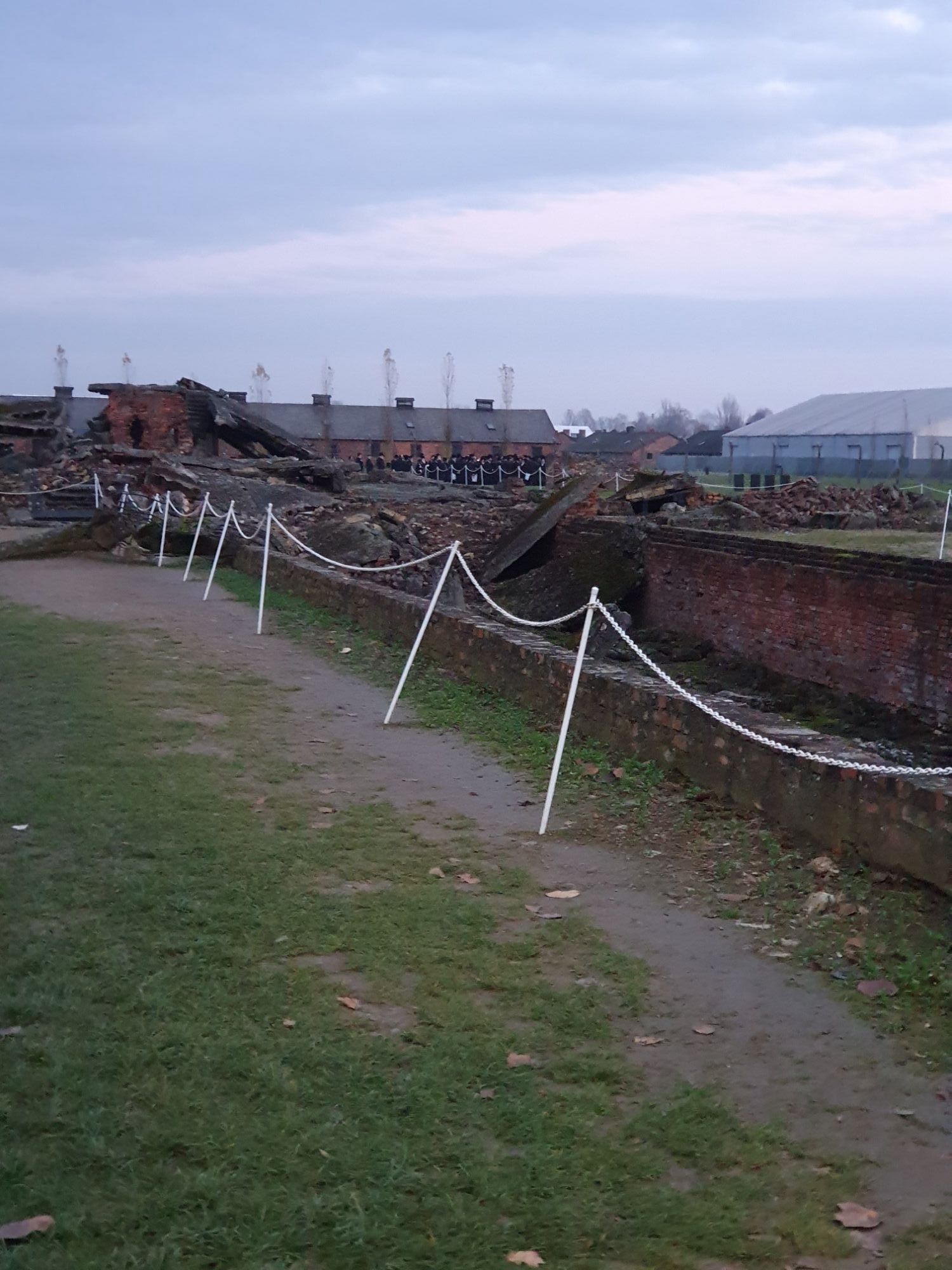 and met our tour guide who shared with us very harrowing but insightful information about the individual stories of the Holocaust. Our tour was upsetting, and it was difficult to see the belongings including shoes, bags, photos and names of the innocent people murdered there. We reflected afterwards about the importance of knowing and remembering the events of the Holocaust, and we were supported throughout by both our educator and each other.
and met our tour guide who shared with us very harrowing but insightful information about the individual stories of the Holocaust. Our tour was upsetting, and it was difficult to see the belongings including shoes, bags, photos and names of the innocent people murdered there. We reflected afterwards about the importance of knowing and remembering the events of the Holocaust, and we were supported throughout by both our educator and each other.
Finally, we arrived at Auschwitz-Birkenau, the largest camp. We saw the awful conditions the prisoners lived in, the remains of gas chambers destroyed to hide evidence and finally photographs and more personal belongings of those imprisoned there. We finished by lighting candles and reading poems as a memorial to the innocent lives lost. Whilst it was distressing to see, knowing the true stories of the Holocaust and its victims is both an honour and responsibility to teach others and keep the Holocaust from being forgotten.
Learn more about Lessons from Auschwitz Project by the Holocaust Educational Trust by clicking here.










